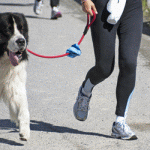 Exercise increases circulation and helps remove the toxins and impurities that have accumulated in the physiology
Exercise increases circulation and helps remove the toxins and impurities that have accumulated in the physiology
These deposits are a major factor in the breakdown of the resistance of the body. Exercise is a key procedure for helping the body’s natural internal cleansing processes.
Exercise increases mind-body coordination. Disease occurs when the body loses contact with the underlying intelligence responsible for its maintenance and repair. Exercise involves the coordinated activity of body and mind and is a valuable aid in maintaining contact of the physiology with biological intelligence.
Exercise Instructions
• Quantity: Ayur-Veda recommends exercising to 50% capacity. Fifty percent capacity is usually when strain begins to appear in the body -breathing through the nose is no longer easy, sweat begins to appear on the body and it becomes difficult to maintain proper form and focus during exercise. It is not healthy to go beyond 50% capacity as this stresses the body and its energy will be needed to be diverted into repairing and re-balancing the effect of straining.
Instead, exercise should energize the physiology, leaving it feeling exhilarated and ready for work. Exercise should never exhaust the physiology and require extra rest for repair.
• Breathing: Breathe through the nose while you exercise. The brain and physiology are balanced by breathing through the nose. If you can no longer breathe through the nose, slow your pace until nose breathing becomes possible again.
• Know when to Stop: Do not exercise to the point of sweating heavily or panting for breath. You are going too far if your heart starts pounding, you are panting and sweating heavily and your muscles start to feel weak and rubbery. all these things turn on the “fight or flight” systems, and deplete the body’s reserves — exactly the opposite of the goal of exercise.
General Points:
1) Loosen up and warm up thoroughly before exercise and warm down properly afterwards. Do not exercise just before or after a meal, in the hot sun, or in extreme wind or cold.
2) Exercise according to body type:
• Vata: By nature Vata types have the quality of motion and changeability highly enlivened in their physiology. They need less exercise than the other major body types. They also have more slender frames and less strong joints and cannot take the pounding of heavy, extended exercise. Vata types excel at balancing and stretching exercises. Yoga, dance, aerobics, walking, short hikes and light bicycling are good for them. Half an hour of mild exercise a day is usually enough. They must be careful not to overexert themselves.
• Pitta: Pitta types have good drive and endurance and can exercise in moderate quantity. They enjoy challenge and sports that bring a sense of accomplishment at the end of the day, like skiing, hiking and mountain climbing. Water sports, because of their cooling nature, are also good for Pitta.
• Kapha: Kapha types have a tendency toward heaviness, overweight and dullness, and as a result need significant quantities of exercise. also, because Kapha types have strong frames and joints, they can more easily withstand vigorous and extended exercise. Running, aerobics, and rowing are good Kapha exercises.
Exercises for all Body Types:
This set of Ayurvedic exercises performed in sequence can be accomplished by almost anyone regardless of physical constitution. Together these exercises enhance the link between intelligence and physiology.
1. Sun Salutations (Surya Namaskara)
—combines stretching, balancing and calisthenics. (1–6 minutes)
2. Neuromuscular integration (Yoga Asanas)
—a set of gentle yoga positions. (10–15 minutes)
3. Balanced breathing (Pranayama)
—a traditional yogic breathing exercise. (5 minutes)
These are ideally performed before the recommended two meditation periods of the day.
 How many times have you gone to sleep at night, swearing you’ll go to the gym in the morning, and then changing your mind just eight hours later because when you get up, you don’t feel like exercising?
How many times have you gone to sleep at night, swearing you’ll go to the gym in the morning, and then changing your mind just eight hours later because when you get up, you don’t feel like exercising?
It’s time to start a Healthy life: your 7 days program
 Vedic Meditation is neither mind-control nor mental discipline, it’s not concentration, a contemplation, a philosophy or a way of life. It is easy to learn and enjoyable to practice, and requires no special skills – anyone can do it successfully.
Vedic Meditation is neither mind-control nor mental discipline, it’s not concentration, a contemplation, a philosophy or a way of life. It is easy to learn and enjoyable to practice, and requires no special skills – anyone can do it successfully.
Vedic Meditation is one of the most powerful techniques available for reducing stress and anxiety. It is also one of the easiest to learn and simplest to practice.
If you are in Auckland (NZ) call me, Warwick Jones, on 09 419 5380, or email to to find our how Vedic Meditation could help you achieve better health.
